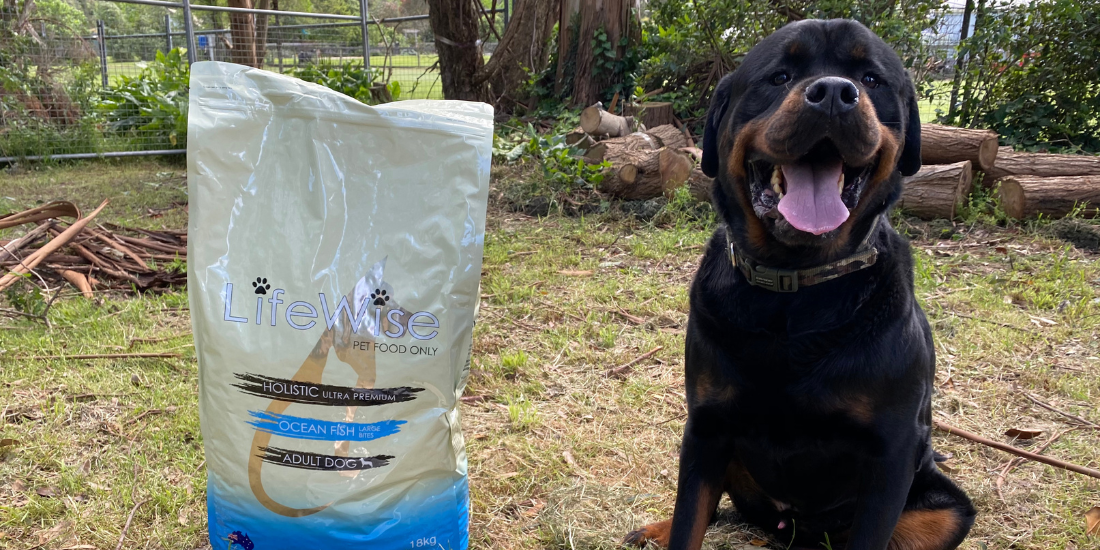
Wondering why your furry companion can't stop scratching? We get it. It's a topic that tugs at pet parent heartstrings. But guess what? There are solutions. So let’s dive into the world of canine itchiness – from allergies to those sneaky critters, UV rays and some internal mysteries.
Prepare for some pawsome tricks to give your dog that itch-free, Swaggle-tastic life. We're talking diet tweaks, bath-time hacks, super supplements, and when it's time to chat with your trusty vet.
Get ready to say goodbye to the itch and hello to pure Swaggle-infused joy!
When Your Pet's Skin Rebels
Let's talk about allergies, the not-so-friendly foes of your furball's skin. You see, the skin, being the body's largest organ, craves a delicate balance of nourishment and protection to stay in tip-top shape. But alas, skin diseases, especially allergies, can throw this harmony out of whack.
Allergies in our furry pals come in various flavours – think contact allergies (stuff they touch), ingestible allergens (things they munch on), and inhaled allergens (yep, just like human hay fever). Even those pesky critters like fleas can set off allergic reactions.
Now, here's the kicker: allergies don't play favourites. They can strike any dog or cat, no matter the breed. Usually, these itchy culprits rear their heads between ages 2 to 8. The usual suspects?Skin inflammation and relentless itching. Conditions like hair loss and skin sores can be a symptom of allergies. The problem may even result in self-inflicted trauma. In the advanced stages, your pet's skin may undergo some wild transformations, and ear infections might crash the party.
What’s more, these allergies can sneak into your pet's gastrointestinal tract, causing upset stomachs and playing tricks with those anal glands, which, in turn, can become a rollercoaster of skin woes.
Now, we'd love to tell you to keep your furry friend away from pesky pollen, but let's face it – that's a mission impossible. Unless your pooch lives in a quarantine bubble, pollen exposure will happen. If your dog's itching is due to environmental allergies, it's time to pay a visit to your trusty vet. They'll give the best advice on oral or injectable medications to manage those pesky symptoms. And if it's diet-related, your vet may suggest an elimination diet trial.
Have you checked your backyard for any trouble-making plants that could be causing skin irritation? Plants like the Wandering Jew (Tradescantia), a pesky weed commonly found on Australia's east coast, thrive in shady, moist spots. Skin contact with these guys can leave your pet with a not-so-pleasant rash.
So, keep an eagle eye on your pet's skin, and if allergies rear their ugly heads, you know who to call – your trusted neighbourhood vet.
Fleas, Ticks, Mites, and Lice
Now, let’s dive into the world of microscopic menaces that can turn your pet's life into an itchy nightmare.
Meet the tiny terrors: fleas, mites, ticks, and lice – they're like the uninvited guests who overstay their welcome. What’s more, these critters can also moonlight as carriers of diseases and other nasty parasites.
Fleas: These little terrors are notorious for transmitting tapeworms. So, it's not just about stopping the itch. It's about making sure your pup stays clear of these intestinal invaders. Flea bites are not just annoyingly itchy; they can make existing skin issues even worse and set off those dreaded flea bite allergies. Effective flea treatments are widely available. But, of course, it's best to consult your trusty vet to find the perfect fit for your pet's needs.
Ticks: Depending on where you live, these parasites come in many flavours. Some ticks can transmit diseases, and the paralysis tick is the most concerning. It can turn your pet into a squeaky toy with symptoms like voice changes, vomiting, weakness, and paralysis. Brown dog ticks can play host to Ehrlichiosis, leading to severe symptoms and, in some cases, worse. In tick-prone areas, a combination of surface insecticides and internal treatments might be the winning strategy.
Mites: Mange, caused by various mites, is like a relentless itch-fest. Demodex mites love to live in puppies and dogs with weaker immune systems, while Cheyletiella mites like to hitch a ride with rabbits. Sarcoptic mites can be hard to detect as just one mite can cause an itch fest for your pet. Treatments are available, but if there's a heavy mite infestation, it might be time to check for underlying health issues.
Lice: They're not exactly the VIPs of the skin world. These guys can either suck blood or chew the skin, but they can be dealt with similarly to fleas and ticks. Just remember, they might come bearing tapeworms, so treat them with proper worming treatment.
To keep your pet's skin and overall health in tip-top shape, stay vigilant against these microscopic invaders and consult a professional vet for the best dog itchy skin treatments.
Shielding Your Pet from UV Rays
Did you know that the sun’s golden rays can pose a risk to your pup's delicate nose and tummy? Even our pink-nosed feline pals are in the danger zone.
But fear not, for we've got a simple solution – pet sunscreen. It might take a smidge of patience and a treat or two, but applying it can become a breeze. And let's be honest: protecting your pet from sun-induced skin damage is a top-tier act of being a responsible pet parent. So go ahead and let your pet enjoy the sun's warm embrace without concern.
Internal Diseases
Of course, not all skin and coat issues in our furry pals are the work of external troublemakers. Sometimes, it's the internal villains that sneak in.
Conditions like thyroid disorders, adrenal mishaps, and hormonal hiccups can seriously mess with your pet's skin and fur. And here's the twist – changes in the skin and coat are often the early warning signs for these sneaky internal diseases.
So, if you spot any peculiar alterations like lumps, bumps, hair loss, or even texture changes in your pet's coat, don't hit the panic button just yet. Instead, dial up your trusty veterinarian ASAP.
The good news? Once these internal culprits are identified, they can often be managed effectively. Plus, it's like a domino effect – addressing these internal issues can often wave goodbye to other pesky symptoms like changes in appetite, excessive thirst, mysterious weight changes, and those pesky gastrointestinal dramas.
So, stay sharp, stay vigilant, and don't hesitate to seek veterinary care.
Diet and Supplements
"What can I give my dog for itchy skin?" Here are some insider tips for you on how to nourish your pooch from the inside out.
A glossy coat starts with what's on your pet's plate. We're talking about a diet full of essential vitamins, minerals, and nutrients. And don't forget those superstar essential fatty acids – they're the key to a coat that shines.
When it comes to picking the right food, aim for diets that meet AAFCO standards or are AAFCO-tested, just like the pros – Veterinary Nutritionists – recommend.
Now, some people hype up grain-free diets, but here's the scoop: they might not be necessary and could even come with some health concerns.
Now, let's talk about raw diets. They've been getting some buzz, but be aware – they come with a higher risk of bacterial diseases.
Another tip to chew on: a diet that sprinkles in some grains can work wonders for your pet's gut microbiome. So, keep an eye out for locally made, balanced diets that keep the additives and preservatives to a minimum. That's the key to a happy belly and a gleaming coat.

About The Author
Dr Terryne Loney
Consultant Veterinarian | Pets: Roni, Barker and Corbett (Cats)
I have 30 years experience in companion animal practice and part of a nationwide veterinary senior leadership team. With a background of interest in all aspects of animal care, emotionally and physically, I am an advocate for wellness and fear free handling as well as dentistry, internal medicine, dermatology, oncology, and safe anaesthesia during surgery.
Enjoyed This?
Explore more ....



